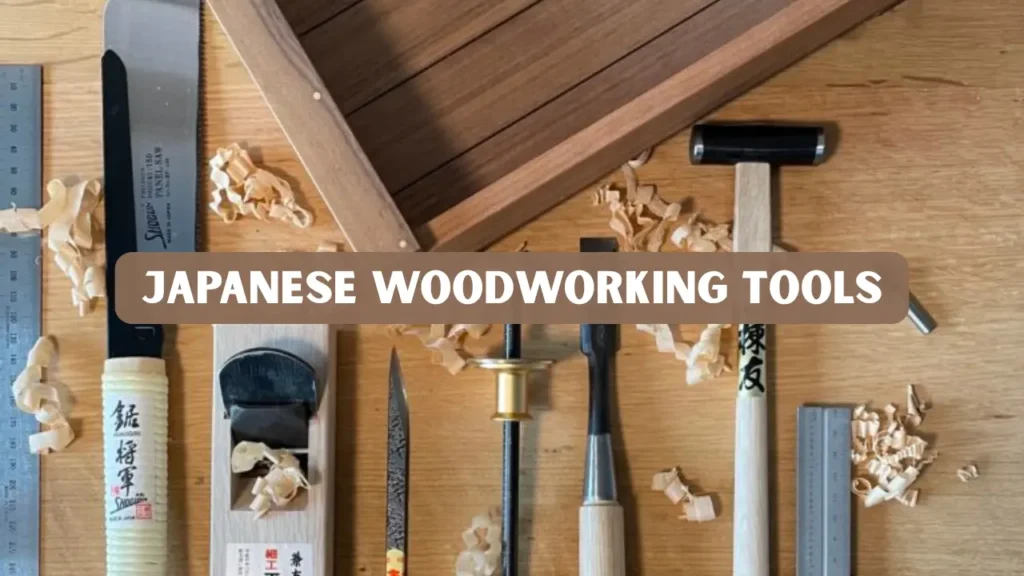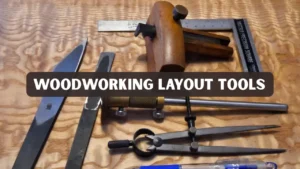Key Takeaways
- Japanese woodworking tools excel at precision, thin shavings, and pull-stroke control, ideal for fine joinery and finishing.
- Core tool groups: nokogiri (saws), kanna (planes), nomi (chisels), genno (hammers), and whetstones, each with distinct design principles.
- Switching to Japanese tools changes technique such as pull-stroke cutting and different sharpening, but often improves accuracy and surface quality.
- For sourcing authentic tools, specialist dealers and curated collections are best; look for trusted stockists and clear sharpening guidance.
Why Japanese Woodworking Tools Matter
If you are serious about joinery, fine furniture or elevating your finishing skills, Japanese woodworking tools belong in the conversation. These tools are built around different principles than many Western tools: thinner blades, pull-stroke operation, laminated steels and an emphasis on hand-feel and control.
In this guide, you’ll discover which tools truly matter and how they differ from Western designs. You’ll also learn how to use, maintain, and find authentic tools for your woodworking journey.
What Makes Japanese Tools Different?
Traditional Japanese hand tools grew from a cultural focus on refined surfaces and joinery that fits without fasteners. Their distinctions are both practical and philosophical:
- Pull-stroke design: Many Japanese saws and planes cut on the pull stroke. This allows slimmer blades and extremely accurate cuts.
- Laminated metals: Chisels and plane blades often combine a hard cutting steel (hagane) with a softer backing (jigane) for toughness plus edge retention.
- Tool geometry for finesse: Japanese planes (kanna) take very fine shavings, yielding glass-smooth surfaces without sanding.
- Sharpening culture: Whetstones (including natural stones) are central; maintaining a razor edge is part of the craft.
These features are discussed in independent studies of Japanese craft culture and tool design, reinforcing the authority of the subject.
Essential Woodworking Japanese Tools Every Craftsman Should Know
Japanese woodworking tools blend tradition, precision, and masterful craftsmanship. Below are essential tools; each built with unique design principles that deliver exceptional accuracy and surface quality.
1. Nokogiri (Japanese Saw)
The nokogiri is a fundamental Japanese hand saw that cuts on the pull stroke, producing thin, clean cuts.
- Ryoba Saw: Double-edged blade for crosscut and rip cutting. It offers versatility and precision for both rough and fine woodworking tasks.
- Dozuki Saw: Backed saw ideal for fine joinery and dovetails. Its rigid spine ensures straight, clean cuts in delicate workpieces.
- Kataba Saw: Single-edged saw used for deep or long rip cuts. It’s perfect for cutting thicker boards with accuracy and control.
- Flush-Cut Saw (Kugihiki): Flexible blade for trimming dowels or plugs without marring surfaces. The thin blade bends easily, allowing seamless finishing touches.
2. Kanna (Japanese Plane)
Unlike Western planes, the kanna is pulled toward the user. It’s designed to take whisper-thin shavings for an ultra-smooth surface finish.
- Ideal for final smoothing and fine finishing. It leaves a glass-like surface that often eliminates the need for sanding.
- Adjusting the wooden body (dai) ensures precise blade projection. Proper tuning enhances control and delivers perfectly even shavings.
3. Nomi (Chisels)
Japanese chisels feature a laminated blade, hard steel for cutting edge, soft iron for shock absorption.
- Aisukomi (Bench Chisel): General-purpose chisel for everyday joinery. It’s durable and versatile, making it essential for most woodworking tasks.
- Oire Nomi (Paring Chisel): Long, thin blade for precision trimming. Its refined edge allows smooth paring of joints and tight corners.
- Atsu Nomi (Heavy Chisel): Used for deep mortises and tough timber. The thick blade provides power and stability for heavy-duty carving.
4. Genno (Hammer)
A perfectly balanced Japanese hammer used for striking chisels, setting nails, or adjusting plane blades.
- Double-faced: flat for striking, slightly domed for finishing blows. This design provides both power and control during joinery work.
- Often custom-balanced to suit the craftsman’s hand. A well-balanced genno reduces fatigue and improves striking accuracy.
5. Sumitsubo (Ink Line Marker)
The Japanese version of a chalk line used for marking straight lines on timber.
- Uses ink-soaked silk thread for precise, smudge-free lines. It ensures accurate markings that guide every cut and joint.
- Essential in traditional temple carpentry and layout work. Craftsmen rely on it to maintain symmetry and structural harmony.
6. Kebiki (Marking Gauge)
This tool marks parallel lines to an edge, ensuring accurate cuts and joinery.
- Adjustable fence and dual blades for perfect mortise layout. It allows consistent spacing for joints and repeatable accuracy.
- Prevents tear-out compared to pencil marks. The clean scribed lines guide chisels and saws for sharper, more professional results.
7. Shakuri Kanna (Rabbet Plane)
Used for cutting grooves, rabbets, or shoulders in wood joints.
8. Hikoki (Japanese Adze)
A traditional shaping tool with a curved blade, ideal for hollowing beams or rough carving.
- Used by timber framers and boat builders. It’s ideal for shaping large beams and curved wooden structures.
- Requires strong control and practiced strokes. Mastery of balance and grip ensures smooth, powerful cuts.
9. Nata (Japanese Hatchet)
A compact woodworking hatchet designed for splitting or shaping wood.
10. Kiguchi Kanna (Grooving Plane)
Specialized plane for cutting narrow grooves or channels in wood.
- Common in making sliding doors, boxes, or cabinets. It’s valued for creating smooth grooves and fitting joints accurately.
- Works with pull motion for precision. The design minimizes resistance, allowing effortless, controlled carving.
11. Kote Nomi (Corner Chisel)
A 90°-angled chisel used to square inside corners of mortises.
- Crucial for tight-fitting joinery. Its fine teeth make delicate cuts that ensure perfect alignment between parts.
- Forged from laminated steel for long life. The combination of hard and soft metals provides both sharpness and durability.
12. Yari Kanna (Spear Plane)
One of the oldest Japanese tools, featuring a spear-shaped blade used for sculpting or curved surfaces.
- Common in temple restoration and beam finishing. It’s used to refine large wooden surfaces with traditional craftsmanship.
- Produces textured, decorative surfaces. The patterned finish adds both visual character and historical authenticity.
13. Kannaban (Plane Adjusting Hammer)
A small hammer used to tap and fine-tune the kanna’s blade position in the dai (body).
14. Whetstones (Toishi)
Sharpening is the heart of Japanese woodworking.
- Coarse stone: Repairs chips or reshapes edges. It’s the first step in restoring a damaged or dull blade.
- Medium stone: Establishes the primary bevel. This stage refines the edge and prepares it for final polishing.
- Finishing stone: Polishes to a mirror edge. It delivers razor-sharp results ideal for fine joinery and precision cutting.
Regular sharpening preserves tool performance and prolongs blade life.
15. Kiguchi Nomi (Grooving Chisel)
Designed for clean groove cutting where planes can’t reach.
16. Daruma Plane (Round Plane)
A round-bottom plane ideal for curved workpieces, such as chair legs or cylindrical components.
17. Mokume Saw (Decorative Veneer Saw)
Used in mokume (woodgrain) or marquetry work for intricate cutting patterns.
18. Tsuki Nomi (Paring Chisel)
Long-handled chisel for fine paring and surface trimming.
19. Kannamaki (Plane Blade Holder)
A blade-setting guide for kanna sharpening.
20. Dozuki Folding Saw
A modern evolution of the traditional dozuki.
Practical Benefits: Why Pick Japanese Tools?
- Precision: Thin blades and pull-stroke control deliver clean joinery and fewer mistakes.
- Edge Retention: Laminated steels hold a sharp edge longer, especially when paired with good stones.
- Surface Quality: Planing with a kanna often reduces or eliminates the need for sanding.
The research into traditional Japanese carpentry confirms that the use of these tools, techniques and philosophies contributes materially to their remarkable craftsmanship.
Switching Techniques: Three Adjustments You’ll Make
- Learn the Pull Stroke: For saws and planes the muscle memory is different; practice on scrap wood first.
- Sharpen More Intentionally: Expect to spend time learning whetstone grit progression, flattening and bevel management.
- Re-think Striking: Chisel and mallet technique adapt to laminated blades and Japanese mallets/hammers.
Buying Guide
- Specialist Retailers: Shops that stock verified brands and provide sharpening advice are preferable.
- Starter Set Recommendation: A ryoba saw, a dozuki or kataba, a kanna (or a quality Western smoothing plane if you’re cautious), a 3-4 piece chisel set and a medium/finishing whetstone.
- What to Avoid: Very cheap knock-offs with poor steel and vague tempering—they will frustrate more than help.
External resource to explore more: The architecture department at MIT offers deep insight into traditional Japanese joinery and tool use.
Care and Sharpening
- Flatten stones regularly. A lapping plate prevents uneven edges and poor contact.
- Use progressive grits. Start coarse for reshaping, then finish with high-grit polishing stones or natural stones to refine the edge.
- Store blades dry. Humidity leads to rust, so use light oil or rust inhibitors if needed.
Good maintenance literally extends the lifespan of your tools and improves the results of your work.
Real-World Example
In a small joinery shop I observed, shifting a portion of the finishing work to kanna planes and dozuki saws resulted in faster setup for delicate joinery and fewer sanding passes. The historical documentation of how Japanese craftsmen built entire buildings using Japanese woodworking tools and no metal fasteners further underscores the depth and legacy of this craft.
Japanese vs Western Tools: Quick Comparison
- Blade thickness: Japanese = thin; Western = thicker.
- Stroke: Japanese = pull (saws & planes); Western = push (most planes) / push (saws).
- Sharpening: Japanese = whetstones/natural stones; Western = files, stones, power sharpeners.
- Best for: Japanese = fine joinery, finishing; Western = heavy stock removal, robustness.
Conclusion
If your work prioritizes accuracy, clean joinery, and fine surface finish, adopting Japanese woodworking tools is absolutely worth exploring. There is a learning curve involving sharpening, pull-stroke technique, and tool selection, but the payoff is cleaner work, greater control at the bench, and a tangible connection to a woodworking tradition refined over centuries. Try one or two tools first, such as a dozuki saw and a quality chisel set. Practice on scrap work and build your kit deliberately. Your craftsmanship will thank you.
FAQs
What are the best first Japanese tools to buy?
Start with a ryoba saw, a dozuki for precision, a basic set of nomi chisels and a medium/finishing whetstone. Try a kanna only after you have practiced the pull-stroke technique.
Are Japanese planes (kanna) better than Western planes?
“Kanna” planes excel at final smoothing and thin shavings. Western planes often remove material faster and are easier for beginners to adopt. Many woodworkers use both sets of tools.
How often should I sharpen Japanese chisels?
Sharpening frequency depends on usage, but frequent light touch-ups on a finishing stone keep edges optimal. Major reprofiling is rarely needed if you maintain the edge properly.
Where can I learn the pull-stroke technique?
Look for woodworking classes, online video tutorials or hands-on meetups. Specialist retailers and manufacturing brands also publish step-by-step guides and workshops.




